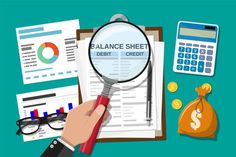End of Year financial statements
End of year financial statements, also known as year-end financial statements, are comprehensive reports that summarize a company's financial performance and position at the end of its fiscal year. These statements are crucial for internal decision-making and external stakeholders such as investors, lenders, and regulatory bodies to assess the company's financial health, profitability, and overall performance.
There are four main components of end of year financial statements:
1. Income Statement (or Profit and Loss Statement):
This statement details the company's revenues, expenses, gains, and losses over the fiscal year, ultimately calculating the net income or net loss. It provides insights into the profitability of the business. For example:
Example Income Statement:
Revenue: $1,000,000
Cost of Goods Sold: $500,000
Gross Profit: $500,000
Operating Expenses: $300,000
Net Income: $200,000
2. Balance Sheet:
The balance sheet provides a snapshot of a company's financial position at a specific point in time, typically the end of the fiscal year. It lists the company's assets, liabilities, and shareholders' equity. Here's an example:
Example Balance Sheet:
Assets:
- Cash: $100,000
- Accounts Receivable: $150,000
- Inventory: $75,000
- Property, Plant, and Equipment: $500,000
Total Assets: $825,000
Liabilities:
- Accounts Payable: $50,000
- Loans Payable: $200,000
- Accrued Expenses: $25,000
Total Liabilities: $275,000
Shareholders' Equity:
- Common Stock: $100,000
- Retained Earnings: $450,000
Total Shareholders' Equity: $550,000
Total Liabilities and Shareholders' Equity: $825,000
3. Cash Flow Statement:
This statement discloses the cash inflows and outflows during the fiscal year, classified into operating, investing, and financing activities. It helps analyze the sources and uses of cash within the business. An example might be:
Example Cash Flow Statement:
Operating Activities:
- Cash Receipts from Customers: $800,000
- Cash Payments to Suppliers: ($400,000)
- Cash Payments for Operating Expenses: ($250,000)
Net Cash from Operating Activities: $150,000
Investing Activities:
- Purchase of Property, Plant, and Equipment: ($100,000)
Net Cash Used in Investing Activities: ($100,000)
Financing Activities:
- Issuance of Common Stock: $50,000
- Proceeds from Loans: $100,000
- Repayment of Loans: ($50,000)
Net Cash Provided by Financing Activities: $100,000
Net Increase in Cash: $150,000
4. Statement of Shareholders' Equity (or Statement of Changes in Equity):
This statement presents the changes in shareholders' equity over the fiscal year. It shows how the company's net income, dividends, and other equity-related transactions impact shareholders' equity. An example could be:
Example Statement of Shareholders' Equity:
Beginning Retained Earnings: $400,000
Net Income: $200,000
Dividends: ($50,000)
Ending Retained Earnings: $550,000
Common Stock Issued: $100,000
Ending Common Stock: $100,000
Total Shareholders' Equity: $650,000
In addition to the four main components mentioned earlier, there are a few other types of financial statements that companies may include as part of their end of year reporting:
5. Notes to the Financial Statements:
These are detailed explanations and additional information that accompany the financial statements. Notes provide further insights into accounting policies, significant transactions, contingent liabilities, and other important disclosures.
6. Statement of Comprehensive Income:
This statement reports comprehensive income, which includes not only the net income but also other comprehensive income items like unrealized gains or losses on investments or foreign currency translation adjustments.
7. Statement of Changes in Financial Position:
Also known as the cash flow statement or statement of cash flows, this statement tracks the inflows and outflows of cash from the operating, investing, and financing activities. It helps understand how cash has been generated and used during the reporting period.
8. Segment Reporting:
In some cases, companies may include segment reporting to provide financial information about different business segments or geographical locations. This allows stakeholders to evaluate the performance and profitability of each segment separately.
It's important to note that the presentation and disclosure requirements for financial statements may vary based on the accounting standards followed by the company. Commonly used accounting standards include Generally Accepted Accounting Principles (GAAP) and International Financial Reporting Standards (IFRS).
Overall, end of year financial statements are essential tools for assessing a company's financial performance, liquidity, solvency, and growth potential. They provide a comprehensive view of a firm's financial health and aid in decision-making for both internal management and external stakeholders.
Here are a few sample questions with answers on end-of-year financial statements:
Question 1:
What are the primary financial statements prepared at the end of the year?
Answer: The primary financial statements prepared at the end of the year include the income statement, balance sheet, statement of cash flows, and statement of changes in equity.
Question 2:
Why is the income statement important in understanding a company's financial performance?
Answer: The income statement, also known as the profit and loss statement, provides a summary of a company's revenues, expenses, and net income over a specific period. It helps assess the company's profitability, identify trends, and evaluate the effectiveness of its operations.
Question 3:
How does the balance sheet differ from the income statement?
Answer: The balance sheet provides a snapshot of a company's financial position at a specific point in time. It lists the company's assets, liabilities, and shareholders' equity. In contrast, the income statement shows the company's financial performance over a period by summarizing revenues, expenses, and net income.
Question 4:
What information can be found on the statement of cash flows?
Answer: The statement of cash flows shows the inflows and outflows of cash from a company's operating activities, investing activities, and financing activities. It helps assess the company's cash flow generation, its ability to meet obligations, and its investing and financing decisions.
Question 5:
How can the statement of changes in equity be used to understand a company's ownership structure?
Answer: The statement of changes in equity shows how a company's shareholders' equity has changed over a period. It highlights the changes in contributed capital, retained earnings, and other comprehensive income. It helps understand factors affecting the ownership structure, such as share issuances, stock repurchases, and dividends.
Question 6:
How can the income statement and the balance sheet be used together to assess a company's financial position?
Answer: The income statement shows the company's profitability over a period, while the balance sheet provides information on its assets, liabilities, and equity at a specific point in time. By comparing the net income from the income statement to the retained earnings on the balance sheet, one can determine how profits contribute to the company's overall financial position.
Question 7:
Why is it important to analyze the statement of cash flows alongside the income statement and balance sheet?
Answer: The statement of cash flows complements the income statement and balance sheet by showing the actual cash inflows and outflows of a company. While the income statement may include non-cash items like depreciation, the statement of cash flows reveals the cash impact of these transactions. It provides insight into a company's liquidity, its ability to generate cash, and how it invests and finances its operations.
Question 8:
How can a company's financial statements be used to gauge its liquidity and solvency?
Answer: Liquidity refers to a company's ability to meet its short-term obligations, while solvency refers to its ability to meet long-term obligations. Key financial ratios derived from the balance sheet, such as the current ratio and quick ratio, can help evaluate liquidity. Similarly, ratios like debt to equity and interest coverage ratios can assess solvency by examining a company's long-term debt and its ability to service that debt.
Question 9:
What is the purpose of the notes to the financial statements?
Answer: The notes to the financial statements provide additional information and explanations that clarify the content presented in the financial statements. They include disclosures about accounting policies, significant events, contingencies, and other relevant details that further enhance the understanding and transparency of the financial statements.
Question 10:
How do auditors play a role in ensuring the accuracy and reliability of end-of-year financial statements?
Answer: Auditors are independent professionals who review and examine a company's financial statements to express an opinion on their fairness and compliance with accounting principles. They perform procedures such as vouching, testing, and verification to provide assurance to stakeholders that the financial statements have been prepared in accordance with applicable standards and are free from material misstatements.
Remember, these examples are just a starting point, and the complexity and breadth of questions can vary depending on the specific company, industry, and reporting requirements.









Comments
Post a Comment